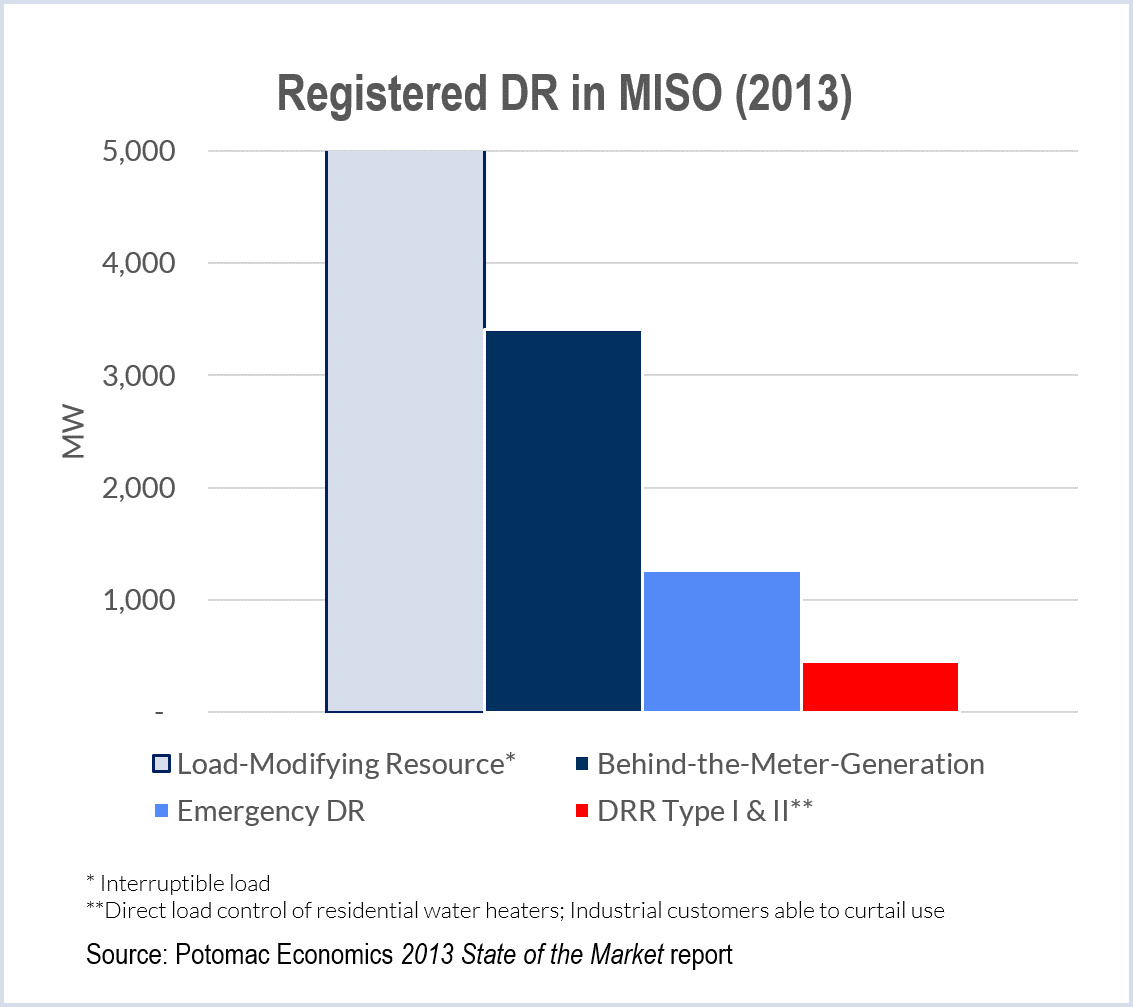By Chris O’Malley and Rich Heidorn Jr.
If you want to know why many think that demand response hasn’t fulfilled its potential in MISO, talk to Brian Helms.
Helms, the director of energy services at new MISO member Century Aluminum, said that when he attended a MISO workshop he was unable to get an answer about what form of approval would be needed to register his plant as a Load- Modifying Resource. And when he asked his local utility how to sign up, it told him it wasn’t interested.
“The path to providing those resources is kind of tortuous and murky,” Helms recounted at the MISO Advisory Committee’s “hot topic” discussion on demand response last week.
The committee sought stakeholder input on how to make the most of demand response programs, and whether MISO should take any action while waiting for final word on whether last May’s appellate court ruling voiding the Federal Energy Regulatory Commission’s Order 745 will stand.
Unlike PJM, most of MISO’s demand response assets are administered through state programs. While that means less disruption if the D.C. Circuit Court of Appeals ruling in the Electric Power Supply Association v. FERC case stands, stakeholders told the committee the disparate state rules make it more of a challenge for the RTO to maximize such resources. (The D.C. Circuit yesterday granted the U.S. Solicitor General’s request for more time to seek a Supreme Court rehearing of the case.)
Representing end-use customers, DeWayne Todd, energy services manager at Alcoa in Newburgh, Ind., said that MISO has done a good job of integrating available Load-Modifying Resources through legacy interruptible electric service rates.
Demand Response Resources ‘Untapped’
But Demand Response Resources are largely untapped in the energy and ancillary services markets due to retailers’ restrictions on participation and compensation, the End-Use Sector said. They cited the Independent Market Monitor’s State of the Market report, which shows there are just 75 MW of controllable Demand Response Resources — all attributable to Alcoa, which often interrupts production when electric price signals rise. (See chart.)
“I think there’s a huge opportunity, and not just [in] smelting, but other customers and consumers, as well,” Todd said.
The Environmental Sector agreed, saying MISO’s minimum threshold of 5 MW for participation in energy and ancillary services markets is too high. PJM’s threshold, they noted, is 100 kW.
The Environmental Sector recommended MISO employ demand response as a “transmission-like resource” in its planning, saying DR resources could help maintain reliability at lower cost than System Support Resources while longer-term transmission or generation solutions are implemented. “DR can also reduce or eliminate the need for costly transmission upgrades, or be paired with a transmission upgrade or voltage support to help eliminate potential reliability issues,” it said.
Aggregators ‘Frozen Out’
The environmentalists lamented that third-party providers, which play a big role in PJM, are “largely frozen out” of MISO’s markets. Among MISO states, only Illinois permits aggregators of retail customers (ARC) to participate, they said.
The Organization of MISO States said MISO “has done an adequate job of meeting FERC requirements for DR, while balancing stakeholder desires for sometimes conflicting market parameters.”
It urged the RTO to work with market participants to accommodate new demand response technologies and remove barriers to participation. OMS cited methods of directly controlling customer-owned electric water heaters to support grid reliability. Participants “would like to develop programs to offer this DR in MISO’s ancillary services market, however current MISO protocols, relating to metering and zonal boundaries, may be prohibiting participation,” OMS said.
The Transmission-Dependent Utilities Sector said MISO has allowed DR fair access to its markets and said load-serving entities should continue to have the option to operate their DR programs at the retail level, without offering it as a wholesale product.
Reliability Benefits
The Public Consumer Group acknowledged that the state-by-state variation in demand response programs is a challenge for MISO but that the RTO should nonetheless make increasing DR a top priority, saying such resources could aid reliability and reduce rates.
During last winter’s polar vortex, the group said, MISO did not even consider calling on DR resources, unlike PJM. “As a result, capacity margins were unnecessarily tight, and prices, which were ultimately passed on to consumers, were likely higher than necessary,” it said. “In addition to paying higher prices when DR is not called upon in near-emergency circumstances, end-use consumers in MISO are not getting appropriate use of DR resources for which they are paying in their rates. … Because DR is so rarely called upon, customers are not enjoying the full value of these resources.”
IPPs: Demand Response Has No Place on Supply Side
MISO’s independent power producers took a position similar to that of generators in PJM and ISO-NE, citing the EPSA ruling in arguing that demand response has no place in the supply side of wholesale markets. “MISO will need to establish parameters for load-serving entities and state regulators in order to use these assets focusing on their primary function: load modification, also known as load shaving,” they said.
“There’s a lot of uncertainty, but it’s pretty clear if you look at ISO New England and PJM, they’re being very proactive in what they’re doing with DR and moving it back over to where it traditionally was prior to the advent of organized wholesale markets,” Mark Volpe, senior director of regulatory affairs for Dynegy, told the committee.
Advisory Committee Vice Chairman Kevin Murray said that’s problematic.
“You could take an approach as Mark suggested and force all the demand response back on to the load side of things,” he said. “The problem with that, as MISO has observed, [is] it produces a result where it’s not integrated into MISO’s market when it’s dispatched, [and] it has the effect of reducing load, [depressing] prices during a point in time when the system is stressed during an emergency.”
A number of commenters noted that DR programs among the states differ widely, with some going back decades.
Directors Judy Walsh and Michael Curran said MISO might consider offering incentives to replace the many differing utility contracts with a model that would be easier for MISO to manage.
“I wonder if there’s a way to structure a new opportunity for these players where they would opt-in to some other opportunity to participate in the market where in fact [they] get paid for participating,” Walsh said. “Perhaps we could move out of these old contracts.”






